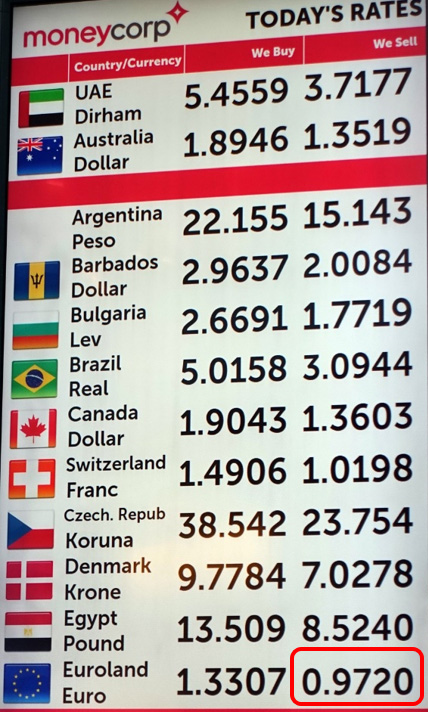
The pound has fallen to its lowest rate against the euro since July 2013 and the lowest rate against the US dollar since 1985. Since August 2015, the pound has depreciated by 23.4% against the euro and 22.2% against the dollar. And since the referendum of 23 June, it has depreciated by 15.6% against the euro and 17.6% against the dollar.
On Sunday 2 October, at the start of the Conservative Party conference, the Prime Minister announced that Article 50, which triggers the Brexit process, would be invoked by the end of March 2017. Worries about what the terms of Brexit would look like put further pressure on the pound: the next day it fell by around 1% and the next day by a further 0.5%.
Then, on 6 October, it was reported that President Hollande was demanding tough Brexit negotiations and the pound dropped significantly further. By 7 October, it was trading at around €1.10 and $1.22. At airports, currency exchange agencies were offering less than €1 per £ (see picture).
With the government implying that Brexit might involve leaving the Single Market, the pound continued falling. On 12 October, the trade-weighted index reached its lowest level since the index was introduced in 1980: below its trough in the depth of the 2008 financial crisis and below the 1993 trough following Britain’s ejection from the European Exchange Rate Mechanism in September 1992.
So just why has the pound fallen so much, both before and after the Brexit vote? (Click here for a PowerPoint of the chart.) And what are the implications for the economy?
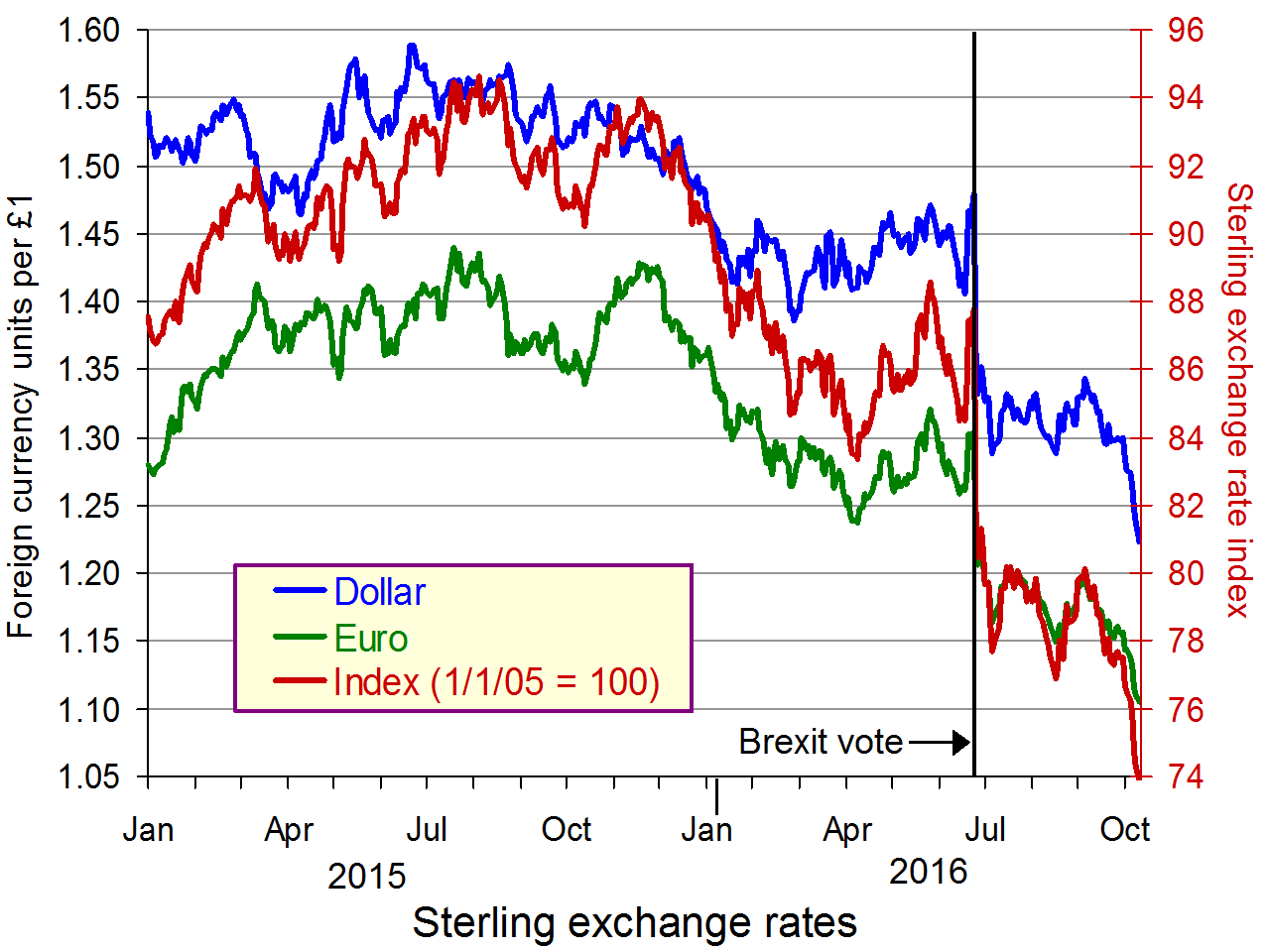 The articles explore the reasons for the depreciation. Central to these are the effects on the balance of payments from a possible decline in inward investment, lower interest rates leading to a net outflow of currency on the financial account, and stimulus measures, both fiscal and monetary, leading to higher imports.
The articles explore the reasons for the depreciation. Central to these are the effects on the balance of payments from a possible decline in inward investment, lower interest rates leading to a net outflow of currency on the financial account, and stimulus measures, both fiscal and monetary, leading to higher imports.
Worries about the economy were occurring before the Brexit vote and this helped to push sterling down in late 2015 and early 2016, as you can see in the chart. This article from The Telegraph of 14 June 2016 explains why.
Despite the short-run effects on the UK economy of the Brexit vote not being as bad as some had predicted, worries remain about the longer-term effects. And these worries are compounded by uncertainty over the Brexit terms.
A lower sterling exchange rate reduces the foreign currency price of UK exports and increases the sterling price of imports. Depending on price elasticities of demand, this should improve the current account of the balance of payments.
These trade effects will help to boost the economy and go some way to countering the fall in investment as businesses, uncertain over the terms of Brexit, hold back on investment in the UK.
Articles
 Pound Nears Three-Decade Low as May Sets Date for Brexit Trigger Bloomberg, Netty Idayu Ismail and Charlotte Ryan (3/10/16)
Pound Nears Three-Decade Low as May Sets Date for Brexit Trigger Bloomberg, Netty Idayu Ismail and Charlotte Ryan (3/10/16)
Sterling near 31-year low against dollar as May sets Brexit start dat Financial Times, Michael Hunter and Roger Blitz (3/10/16)
Sterling hits three-year low against the euro over Brexit worries The Guardian, Katie Allen (3/10/16)
Pound sterling value drops as Theresa May signals ‘hard Brexit’ at Tory conference Independent, Zlata Rodionova (3/10/16)
Pound falls as Theresa May indicates Brexit date BBC News (3/10/16)
The pound bombs and stocks explode over fears of a ‘hard Brexit’ Business Insider UK, Oscar Williams-Grut (3/10/16)
Pound Will Feel Pain as Brexit Clock Ticks Faster Wall Street Journal, Richard Barley (3/10/16)
British Pound to Euro Exchange Rate’s Brexit Breakdown Slows After Positive Manufacturing PMI Halts Decline Currency Watch, Joaquin Monfort (3/10/16)
7 ways the fall in the value of the pound affects us all Independent (4/10/16)
The pound and the fury: Brexit is making Britons poorer, and meaner The Economist, ‘Timekeeper’ (11/10/16)
Is the pound headed for parity v US dollar and euro? Sydney Morning Herald, Jessica Sier (5/10/16)
Flash crash sees the pound gyrate in Asian trading BBC News (7/10/16)
Flash crash hits pound after Hollande remarks Deutsche Welle (7/10/16)
Sterling mayhem gives glimpse into future Reuters, Swaha Pattanaik (7/10/16)
Sterling takes a pounding The Economist, Buttonwood (7/10/16)
Government must commit to fundamental reform The Telegraph, Andrew Sentance (7/10/16)
Data
Interest & exchange rates data – Statistical Interactive Database Bank of England
Questions
- Why has sterling depreciated? Use a demand and supply diagram to illustrate your argument.
- What has determined the size of this depreciation?
- What is meant by the risk premium of holding sterling?
- To what extent has the weaker pound contributed to the better economic performance than was expected immediately after the Brexit vote?
- What factors will determine the value of sterling over the coming months?
- Who gain and who lose from a lower exchange rate?
- What is likely to happen to inflation over the coming months? Explain and consider the implications for monetary and fiscal policy.
- What is a ‘flash crash’. Why was there a flash crash in sterling on Asian markets on 7 October 2016? Is such a flash crash in sterling likely to occur again?

If you want a ticket for an event, such as a match or a concert, but the tickets are sold out, what do you do? Many will go to an agency operating in the ‘secondary market’. A secondary market is where items originally purchased new, such as tickets, company shares, cars or antiques, are put up for sale at a price that the market will bear.
The equilibrium price in a secondary market is where supply equals demand and the actual price will approximate to this equilibrium. In the case of tickets, this equilibrium price can be much higher than the original price sold by the venue or its agents. The reason is that the original price is below the equilibrium.
This is illustrated in the figure (click here for a PowerPoint). Assume that the total supply of tickets is Qs. Assume also that the official box office price is Pbo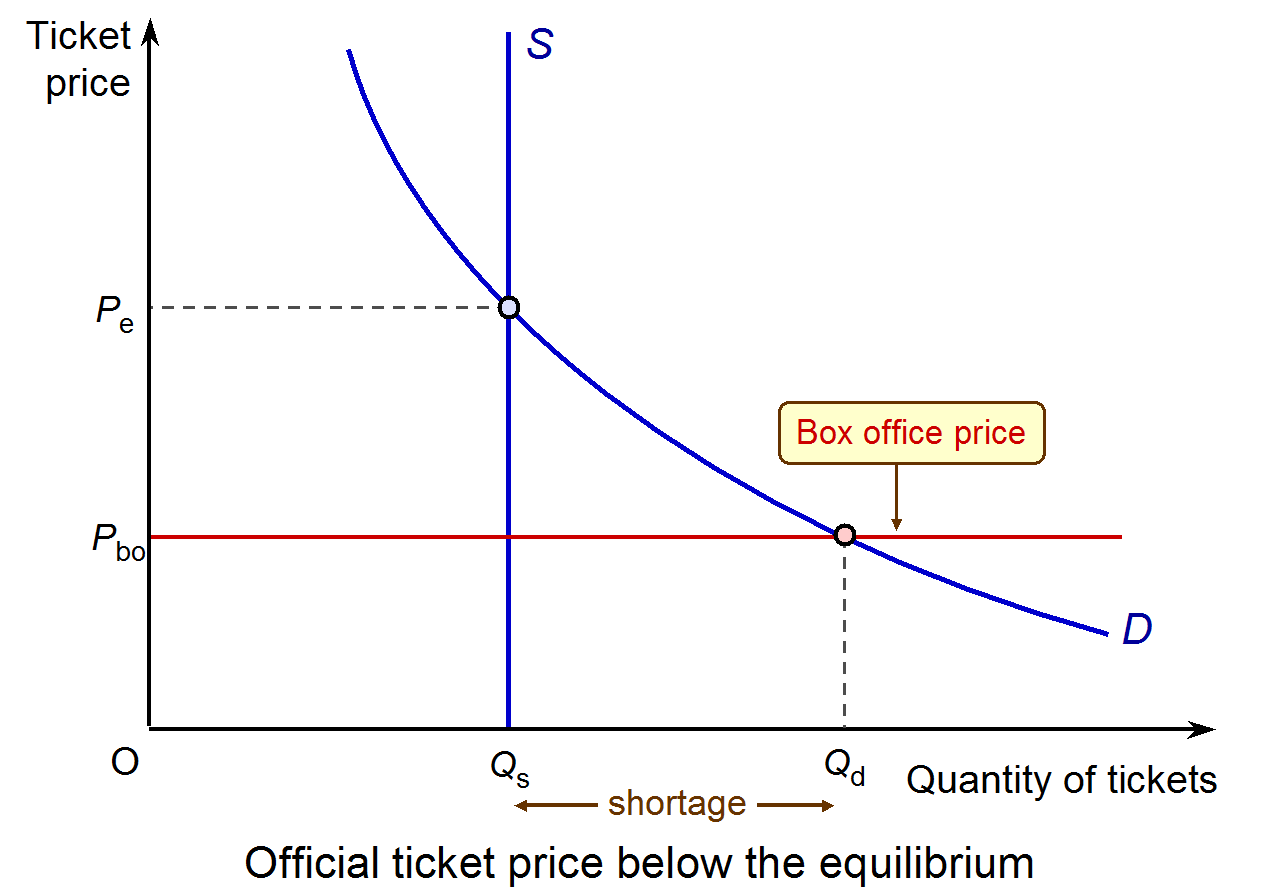 and that demand is given by the demand curve D. At the box office price demand exceeds supply by Qd – Qs. There is thus a shortage, with many fans unable to obtain a ticket at the official price. Many of you will be familiar with having to be as quick as possible to get hold of tickets where demand considerably outstrips supply. Events such as Glastonbury sell out within seconds of coming on sale.
and that demand is given by the demand curve D. At the box office price demand exceeds supply by Qd – Qs. There is thus a shortage, with many fans unable to obtain a ticket at the official price. Many of you will be familiar with having to be as quick as possible to get hold of tickets where demand considerably outstrips supply. Events such as Glastonbury sell out within seconds of coming on sale.
If you buy a ticket and then find out you cannot go to the event, you can sell the ticket on the secondary market through an online site or agency. Such agencies could be seen as providing a useful service as it means that otherwise empty seats will be filled. But if the equilibrium price is well above the original ticket price, there is the potential for huge gain by the agencies, who may pay the seller considerably less than the agency then sells the ticket to someone else.
What is more, the difference between the original price and the equilibrium price in the secondary market makes ticket touting, or ticket ‘scalping’, highly profitable. This is where people buy tickets with no intention of using them themselves but in order to sell them at much higher prices on the secondary market. Such ticket touting has been illegal for football matches since 1994 and was illegal for the 2012 London Olympics, but it is legal for plays, concerts, festivals and other events.
Ticket touts are often highly organised in obtaining tickets at official prices by buying early and using multiple credit cards and multiple identities to avoid systems that restrict the number of tickets issued to a card. They often use internet bots to mass purchase tickets the moment they go on sale.

Those in favour of ticket touting argue that the high price in the secondary market is just a reflection of demand and supply (see the IEA article below). Ticket touting allows tickets to be directed to people who value them most and will get the greatest benefit from it. What is more, banning ticket touting, so the argument goes, would simply drive it underground.
Those against argue on grounds of equity. Ticket prices set below the equilibrium are designed to give greater equality of access to fans. Rationing on a first-come first-served system, either on the internet or by a queue, is seen to be fairer than one by ability/willingness to pay. A poor person may be just as keen to go to an event as a rich person and gain just as much enjoyment from it, but cannot afford the high equilibrium price. What is more, non of the profit from the higher prices reaches the event organisers or the artists or players. Yet the mark-up and hence profit made by ticket touts can be massive, as the first Observer article below shows.
Various measures are being tried to prevent ticket touting. One is the use of paperless tickets, with the number of tickets limited per person and with people having to show their ticket on their phones along with ID at the door or gate. If a person cannot attend, then the solution is a system where they can give the ticket back to the box office (perhaps electronically) which will re-sell it for them at the official price.
A government-backed investigation, the Waterson review reported in May 2016 and recommended that touts should be licensed and that there should be harsher penalties for firms that flout consumer rights law as applying to ticket sales. Whether this would be sufficient to bring secondary market prices down significantly, remains to be seen. In the meantime, organisers do seem to be trying to find ways of beating the touts through smarter means of selling.
Articles
MP Nigel Adams calls for secondary ticket marketing to be reformed Music Week, James Hanley (14/9/16)
Iron Maiden go to war with ticket touts BBC News, Mark Savage (22/9/16)
 The new age of the ticket tout BBC World Tonight, Andrew Hosken (25/5/16)
The new age of the ticket tout BBC World Tonight, Andrew Hosken (25/5/16)
Government urged to help music industry tackle ticket touts The Guardian, Rob Davies (13/9/16)
Ticket touts face licensing threat The Guardian, Rupert Jones (26/5/16)
How the ticket touts get away with bleeding fans dry The Observer, Rob Davies and Rupert Jones (15/5/16)
What sorcery is this? A £140 ticket for new Harry Potter play now costs £8,327 The Observer, Rob Davies and Laurie Chen (14/8/16)
Ticket touts made $3m from the last Mumford & Sons tour. $0 went back to the music industry. Music Business Woldwide, Adam Tudhope (6/9/16)
This is tout of order – join the Daily Mirror campaign to beat rip-off ticket resales Daily Mirror, Nada Farhoud (19/9/16)
Ticket touts: A muggle’s game The Economist (20/8/16)
Can We Fight Back Against The Robot Touts Ruining Live Music? Huffington Post, Andy Webb (6/9/16)
In defence of ticket touts Institute of Economic Affairs, Steve Davies (25/2/15)
Report
Consumer protection measures applying to ticket resale: Waterson review Department for Business, Innovation & Skills and Department for Culture, Media & Sport 26/5/16)
Guide
#Toutsout MMF & FanFair Alliance September 2016
Questions
- Why can ticket touts sell tickets above the equilibrium price shown in the diagram?
- In what ways could ticket touts be said to be distorting the market?
- How do ticket touts reduce consumer surplus? Could they reduce it to zero?
- Why may allowing ticket touting to take place result in empty seats at concerts or other events?
- Would it be a good idea for event organisers to charge higher prices for popular events than they do at present, but still below the equilibrium
- How does the price elasticity of demand influence the mark-up that ticket touts can make? Illustrate this on a diagram similar to the one above.
- Is it in ticket touts’ interests to adjust prices as an event draws closer, just as budget airlines adjust seat prices as the plane fills up? Could organisers sell tickets in the primary market in this way with prices rising as the event fills up?
- Discuss the various ways in which the secondary ticket market could be reformed? To what extent do these involve reforms in the primary ticket market?
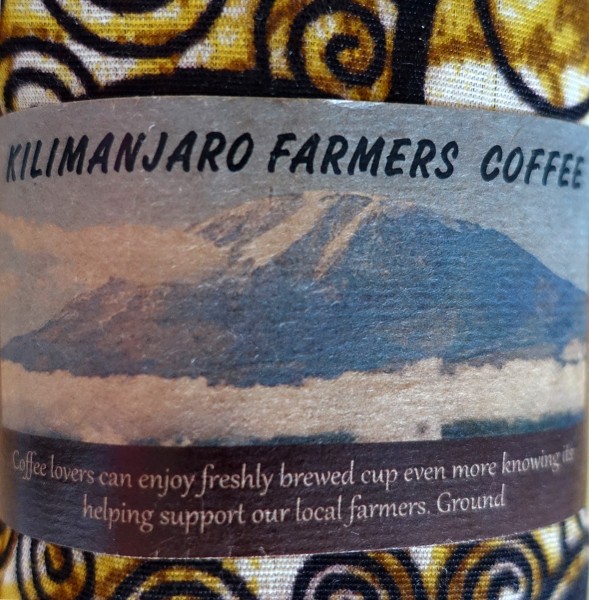 Your Americano, Latte or Cappuccino may soon be more expensive. This is because coffee bean prices are rising. A combination of continuing growth in demand and poor coffee harvests in various parts of the world have led to a rise in both Arabica and Robusta prices, with the International Coffee Organization’s Composite Indicator price (in US dollars) having risen by over 30% since mid-January this year (see chart below: click here for a PowerPoint)
Your Americano, Latte or Cappuccino may soon be more expensive. This is because coffee bean prices are rising. A combination of continuing growth in demand and poor coffee harvests in various parts of the world have led to a rise in both Arabica and Robusta prices, with the International Coffee Organization’s Composite Indicator price (in US dollars) having risen by over 30% since mid-January this year (see chart below: click here for a PowerPoint)
Supply has been affected by droughts in Brazil and Vietnam, two of the world’s biggest coffee producers, and by pests (the Coffee Berry Borer) in the Kilimanjaro region of Tanzania and in other East African countries. Global exports of coffee in July 2016 were 22% down on the same month in 2015.
The growing shortage and rising current (spot) prices is reflected in future prices. 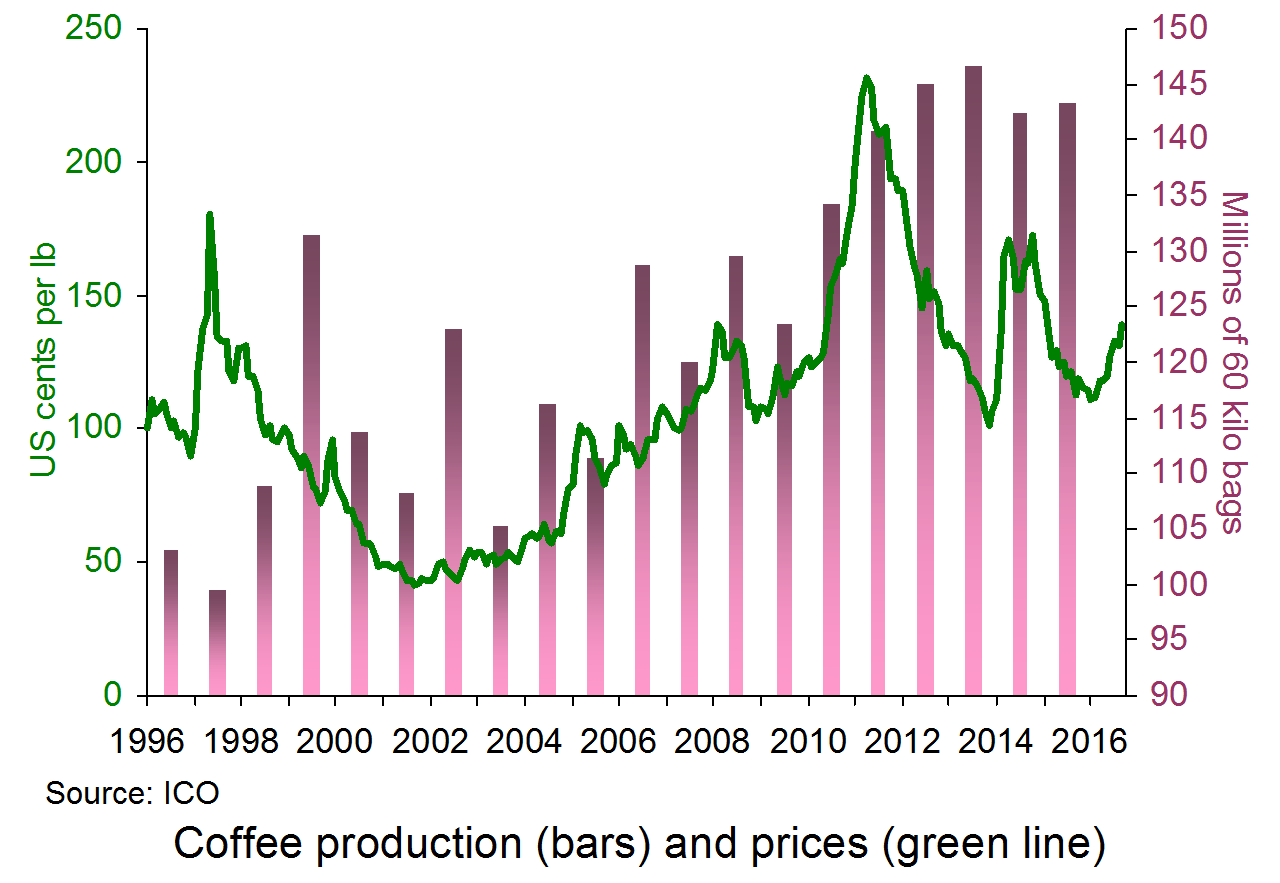 These are prices determined in the market now for trading at a specified future date (e.g. in three months’ time). Future prices depend on predictions of the balance of demand and supply in the future. According to the MarketWatch article below, “Analysts at Société Générale in a note predicted that prices could climb about 30% further by the end of next year”. The current (mid-September) spot price of robusta coffee beans is around $0.96 per lb. The December 2016 future price is around $1.48.
These are prices determined in the market now for trading at a specified future date (e.g. in three months’ time). Future prices depend on predictions of the balance of demand and supply in the future. According to the MarketWatch article below, “Analysts at Société Générale in a note predicted that prices could climb about 30% further by the end of next year”. The current (mid-September) spot price of robusta coffee beans is around $0.96 per lb. The December 2016 future price is around $1.48.
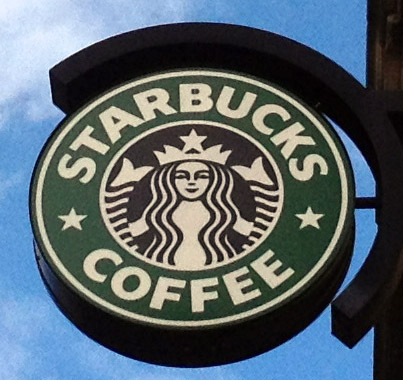 So what effect will this have on the prices in Starbucks, Costa or Caffè Nero? And what effect will it have on ground or instant coffee in supermarkets? To quote the MarketWatch article again:
So what effect will this have on the prices in Starbucks, Costa or Caffè Nero? And what effect will it have on ground or instant coffee in supermarkets? To quote the MarketWatch article again:
A research report from the US Department of Agriculture found that, on average, a 10% increase in green-coffee-bean prices per pound would yield a 2% increase in both manufacturer prices and at the register in places like Starbucks Corp.
This is because the cost of coffee beans is just one element in the costs of coffee roasters and coffee shops. Also these companies use futures markets to smooth out the prices they pay. They hold stockpiles of coffee, which they build up when prices are low and draw on when prices are high. This helps to reduce fluctuations in retail prices.
So don’t worry too much about the price of your morning coffee – at least, not yet.
Articles
Why a surge in coffee-bean prices may not hit the Starbucks set—yet MarketWatch, Rachel Koning Beals (9/9/16)
Wired coffee prices may not slip far News Markets, David Cottle (9/9/16)
Late-harvest woes prompt Brazil coffee harvest downgrade Agrimoney (7/9/16)
Look Out, Latte Lovers: Brazil Drought Hurts Espresso Beans Bloomberg, Fabiana Batista and Marvin G. Perez (13/9/16)
Why Your Morning Coffee Is About to Become Even More Expensive Fortune (28/7/16)
Climate change brews a storm for East Africa coffee farmers Business Daily (East Africa), Paul Redfern (4/9/16)
Coffee Market Report ICO (August 2016)
Data
Commodity Prices Index Mundi
Historical Data on the Global Coffee Trade ICO
ICO’s Coffee Trade Statistics Infographic for July 2016 ICO blog (31/8/16)
Questions
- What determines coffee futures prices?
- How are the price fluctuations of coffee in coffee shops related to the price elasticities of demand and supply? What determines these elasticities?
- Why does a strengthening (an appreciation) of the currency of a coffee exporter affect (a) the price of coffee to producers in the country; (b) international coffee prices in dollars?
- Are poor coffee harvests on balance good or bad for coffee producers? How does this depend on the market price elasticity of demand? Does the answer vary from producer to producer?
- How does speculation affect coffee prices (both spot and future)? Is such speculation of benefit to (a) the coffee consumer; (b) the coffee grower?
 In a recent blog, Falling sterling – bad for some; good for others, we looked at the depreciation of sterling following the Brexit vote. We saw how it will have beneficial effects for some, such as exporters, and adverse effects for others, such as consumers having to pay a higher price for imports and foreign holidays. The article linked below examines these effects in more depth.
In a recent blog, Falling sterling – bad for some; good for others, we looked at the depreciation of sterling following the Brexit vote. We saw how it will have beneficial effects for some, such as exporters, and adverse effects for others, such as consumers having to pay a higher price for imports and foreign holidays. The article linked below examines these effects in more depth.
Just how much the quantity of exports will increase depends on two main things. The first is the amount by which the foreign currency price falls. This depends on what exporters choose to do. Say the pound falls from €1.30 to €1.18. Do exporters who had previously sold a product selling in the UK for £100 and in the eurozone for €130, now reduce the euro price to €118? Or do they put it down by less – say, to €125, thereby earning £105.93 (£(125/1.18)). Their sales would increase by less, but their profit margin would rise.
The second is the foreign currency price elasticity of demand for exports in the foreign markets. The more elastic it is, the more exports will rise for any given euro price reduction.
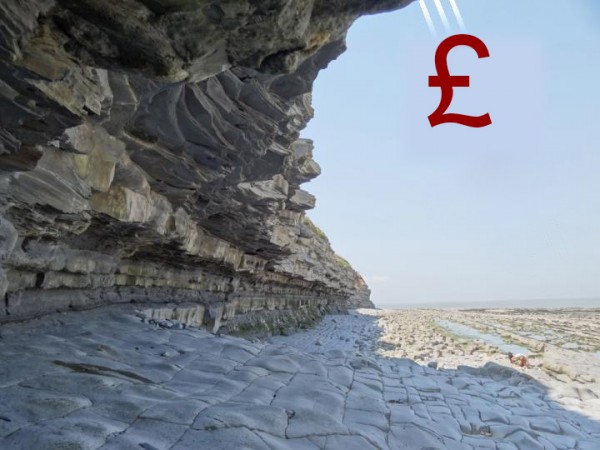 It is similar with imports. How much the sales of these fall depends again on two main things. The first is the amount by which the importing companies are prepared to raise sterling prices. Again assume that the pound falls from €1.30 to €1.18 – in other words, the euro rises from 76.92p (£1/1.3) to 84.75p (£1/1.18). What happens to the price of an import to the UK from the eurozone whose euro price is €100? Does the importer raise the price from £76.92 to £84.75, or by less than that, being prepared to accept a smaller profit margin?
It is similar with imports. How much the sales of these fall depends again on two main things. The first is the amount by which the importing companies are prepared to raise sterling prices. Again assume that the pound falls from €1.30 to €1.18 – in other words, the euro rises from 76.92p (£1/1.3) to 84.75p (£1/1.18). What happens to the price of an import to the UK from the eurozone whose euro price is €100? Does the importer raise the price from £76.92 to £84.75, or by less than that, being prepared to accept a smaller profit margin?
The second is the sterling price elasticity of demand for imports in the UK. The more elastic it is, the more imports will fall and, probably, the more the importer will be prepared to limit the sterling price increase.
The article also looks at the effect on aggregate demand. As we saw in the previous blog, a depreciation boosts aggregate demand by increasing exports and curbing imports. The effects of this rise in aggregate demand depends on the degree of slack in the economy and the extent, therefore, that (a) exporters and those producing import substitutes can respond in terms of high production and employment and (b) other sectors can produce more as multiplier effects play out.
Finally, the article looks at the effect of the depreciation of sterling on asset prices. UK assets will be worth less in foreign currency terms; foreign assets will be worth more in sterling. Just how much the prices of internationally traded assets, such as shares and some property, will change depends, again, on their price elasticities of demand. In terms of assets, there has been a gain to UK balance sheets from the depreciation. As Roger Bootle says:
Whereas the overwhelming majority of the UK’s liabilities to foreigners are denominated in sterling, the overwhelming bulk of our assets abroad are denominated in foreign currency. So the lower pound has raised the sterling value of our overseas assets while leaving the sterling value of our liabilities more or less unchanged.
Article
How a lower pound will help us to escape cloud cuckoo land, The Telegraph, Roger Bootle (31/7/16)
Questions
- What determines the amount that exporters from the UK adjust the foreign currency price of their exports following a depreciation of sterling?
- What determines the amount by which importers to the UK adjust the sterling price of their products following a depreciation of sterling?
- What determines the amount by which sterling will depreciate over the coming months?
- Distinguish between stabilising and destabilising speculation? How does this apply to exchange rates and what determines the likelihood of there being destabilising speculation against sterling exchange rates?
- How is UK inflation likely to be affected by a depreciation of sterling?
- Why does Roger Bootle believe that the UK has been living in ‘cloud cuckoo land’ with respect to exchange rates?
- Why has the UK managed to sustain a large current account deficit over so many years?
 In many cases, we simply leave the market to do what it does best – equate demand with supply and from this we get an equilibrium price and the optimal quantity. But, what happens if either the price or quantity is ‘incorrect’? What happens if the market fails to deliver an efficient outcome? In this case, we look to governments to intervene and ‘correct’ the market and such intervention can take place on the demand and/or supply-side. One area where it is generally felt that government intervention is needed is drugs and the trafficking of them across borders.
In many cases, we simply leave the market to do what it does best – equate demand with supply and from this we get an equilibrium price and the optimal quantity. But, what happens if either the price or quantity is ‘incorrect’? What happens if the market fails to deliver an efficient outcome? In this case, we look to governments to intervene and ‘correct’ the market and such intervention can take place on the demand and/or supply-side. One area where it is generally felt that government intervention is needed is drugs and the trafficking of them across borders.
There are many ways in which governments have tried to tackle the problem of drug usage. The issue is that drugs are bad for individuals, for the community, society and the economy. Too much is produced and consumed and hence we have a classic case of market failure and this justifies government intervention.
But, how should governments intervene? With a substance such as drugs, we have an inelastic demand with resepect to price – any increase in price leads to only a small decrease in quantity. So any policy implemented by governments that attempts to change the market price will have limited effect in restricting demand. With globalisation, drugs can be moved more easily across borders and hence global co-operation is needed to restrict the flow. The article below considers the area of drugs and drug trafficking and looks at some of the policy options open to government.
Narconomics: The business of drug trafficking Houston Chronicle (16/3/16)
Questions
- Why does the market fail in the case of drug trafficking?
- Draw the demand curve you would expect for drugs and use this to explain why an increase in price will have limited effect on demand.
- Is there an argument for making drugs legal as a means of raising tax revenue?
- If better educational programmes are introduced about the perils of drug usage, how would this affect the market? Use a demand and supply diagram to help explain your answer.
- Why does globalisation make the solutions to drug trafficking more difficult to implement?
- Could drug usage and drug trafficking and hence the need to invest more money in tackling the problem actually boost an economy’s rate of growth? If so, does this mean that we should encourage drug usage?
 The articles explore the reasons for the depreciation. Central to these are the effects on the balance of payments from a possible decline in inward investment, lower interest rates leading to a net outflow of currency on the financial account, and stimulus measures, both fiscal and monetary, leading to higher imports.
The articles explore the reasons for the depreciation. Central to these are the effects on the balance of payments from a possible decline in inward investment, lower interest rates leading to a net outflow of currency on the financial account, and stimulus measures, both fiscal and monetary, leading to higher imports. Pound Nears Three-Decade Low as May Sets Date for Brexit Trigger Bloomberg, Netty Idayu Ismail and Charlotte Ryan (3/10/16)
Pound Nears Three-Decade Low as May Sets Date for Brexit Trigger Bloomberg, Netty Idayu Ismail and Charlotte Ryan (3/10/16)








